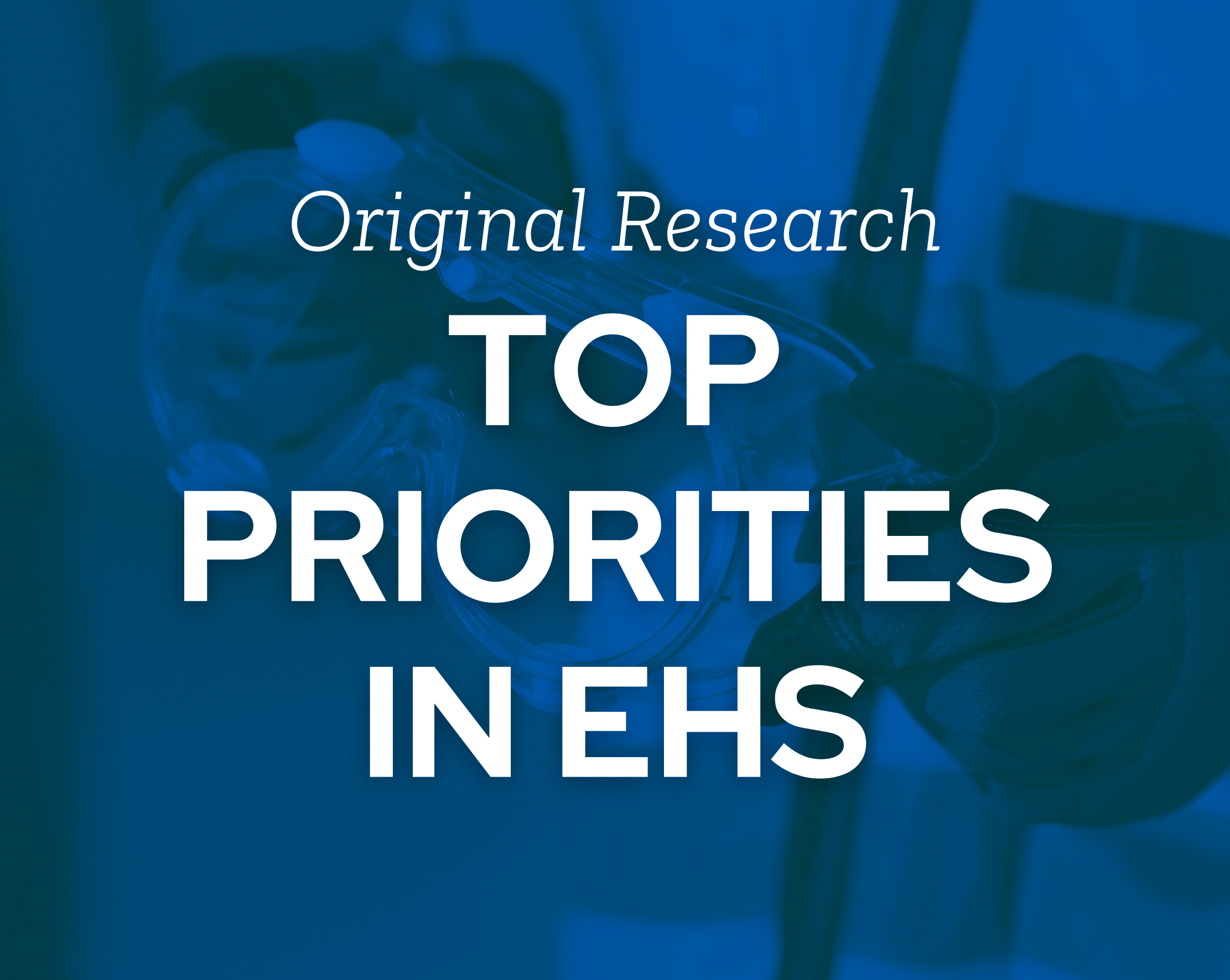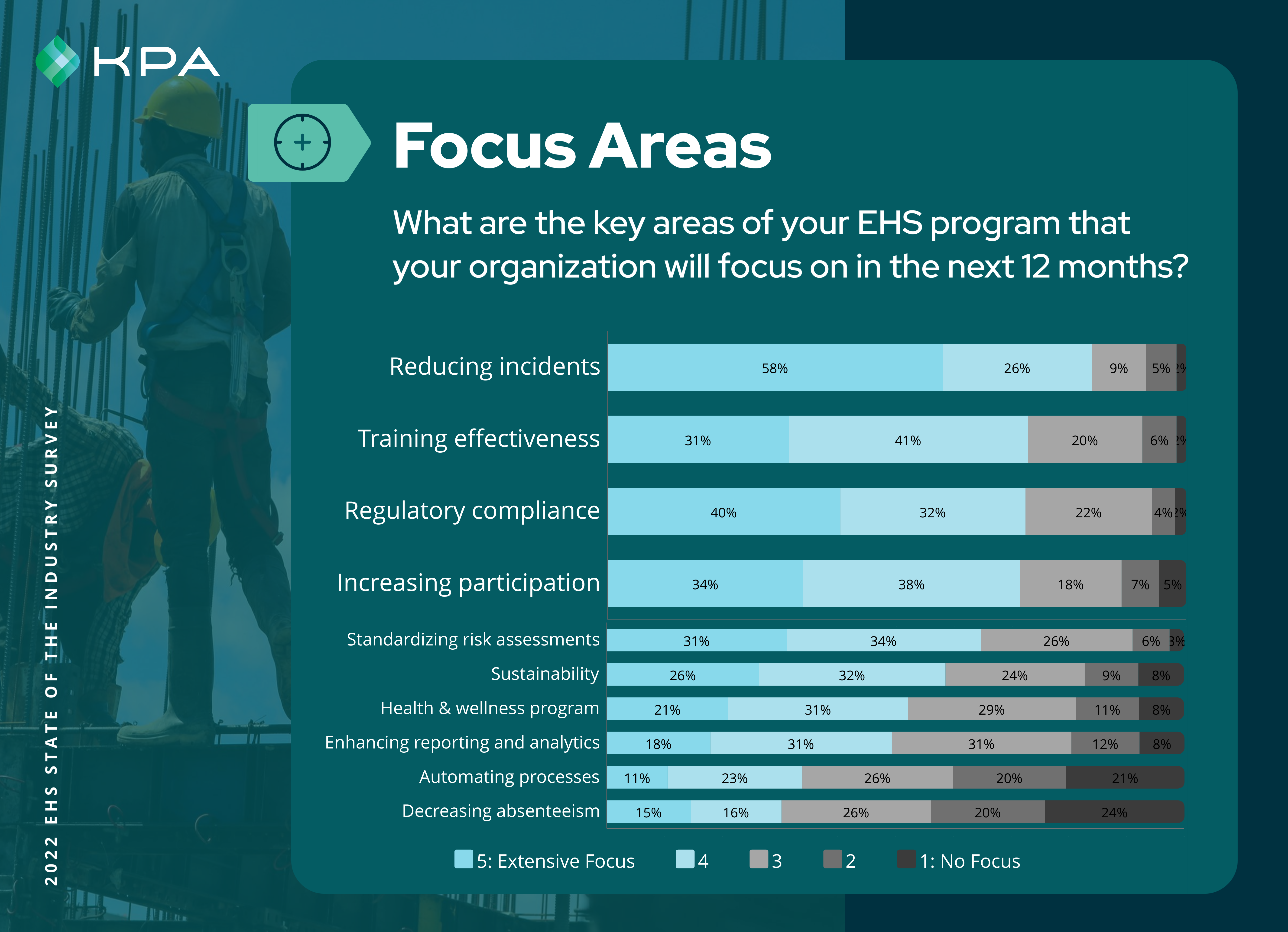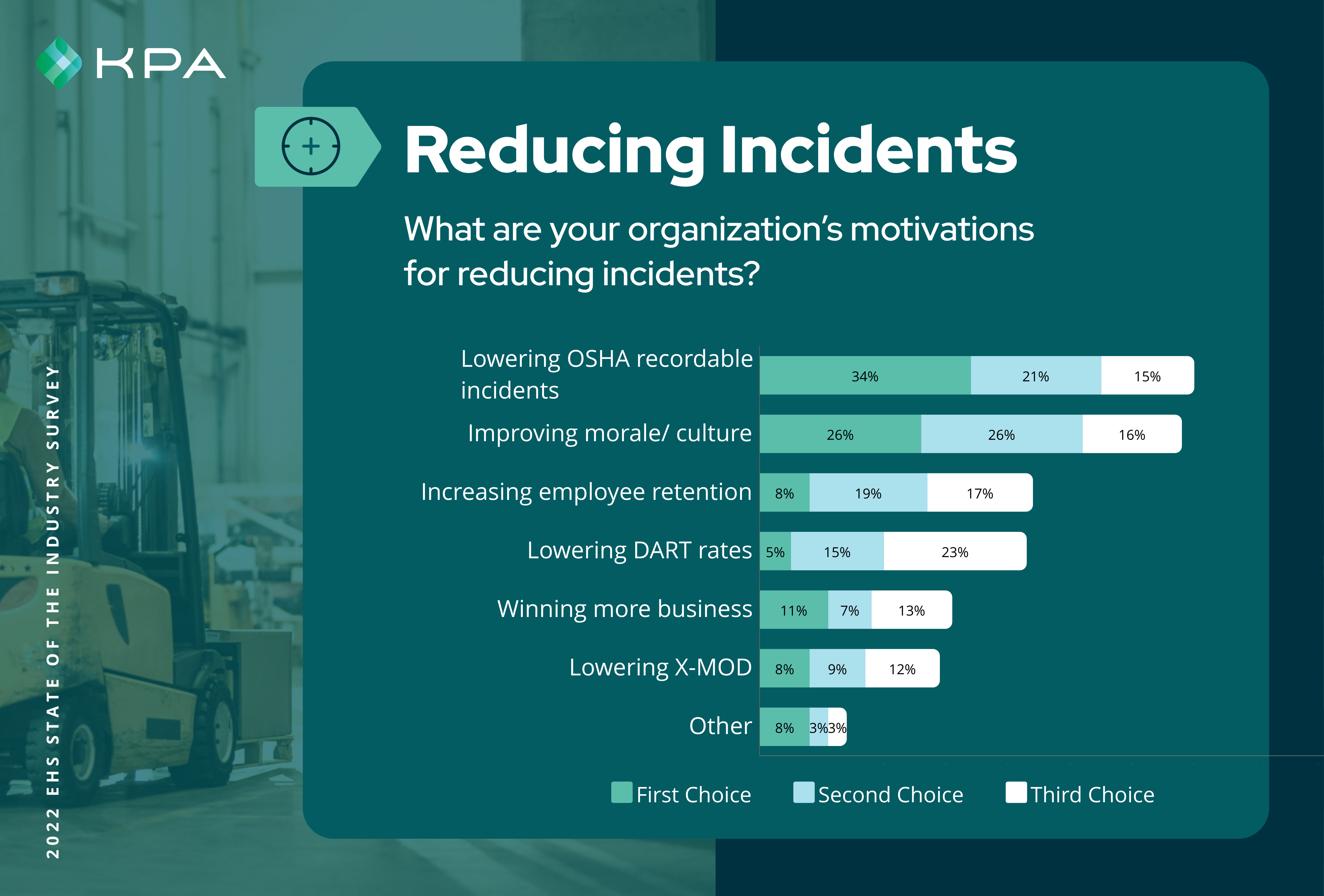What Are the Top Priorities for EHS Programs? Survey Results Show Us the Focus
The results are in. Hot off the press, we bring you the latest study findings from this year’s State of the Market: EHS Program report. It’s our third year partnering with EHS Today on the study, surveying trends in Environment, Health, and Safety programs.
Join us over the next few weeks as we dive into data and our conclusions in a quick-read format.
You can catch the coming topics here:
- What Are the Top Priorities for EHS Programs?
- The Biggest Challenges Facing EHS Programs
- What Are Your Peers’ Priorities for EHS Reporting?
- How Are Companies Incorporating Technology into their EHS Programs?
- How Your Peers Rated Their Safety Program Engagement
- Does EHS Software Affect Safety Program Performance?
Download the full study to learn how high-performance EHS programs elevate safety as an organization-wide priority.
Let’s jump into the data…
What Are Companies’ EHS Priorities for the Coming Year?
In the survey, we asked respondents what their EHS programs will focus on in the next 12 months. The majority of companies will focus their EHS efforts on reducing incidents, with 58% of respondents reporting that as their planning for extensive focus on the topic.
Across industries and company sizes, the four top priorities for EHS programs will be:
- Reducing incidents;
- Training effectiveness;
- Regulatory compliance; and
- Increasing participation.
Slicing the Data by Company Size
For larger companies (1,000 employees or more), sustainability bubbles up as a strong focus (69%). Respondents in smaller-sized companies (fewer than 200 employees) ranked standardizing risk assessments as their fourth-highest area of focus. In contrast, mid-sized and large companies ranked it lower on the list.
The Focus Changes Depending on Industry
The construction and heavy manufacturing industries ranked effective training higher than other industries (78%).
Respondents in heavy manufacturing indicated that standardizing risk assessments will be a key area of focus (70%).
Similar to larger organizations, sustainability is a strong focus for both light and heavy manufacturing (63% and 76%, respectively).
Digging into the Why
Looking at the highest priority for EHS managers, we asked respondents to note their motivations for reducing incidents. The results were an interesting blend of program performance and impacts on personnel.
Respondents’ primary motivations for incident reduction are:
- Reducing OSHA recordable incidents (36% said this is their primary motivation) and
- Improving morale/culture (26% said this is their primary motivation).
Tying it all together:
EHS Software Supports both the Participation and the Systems Sides of Safety Programs
While reviewing the data, KPA’s Product Director, Jade Brainard stated, “The report shows us that the focus on reducing incidents, workplace culture, and employee engagement are all connected. If EHS software can help reduce workplace incidents and encourage more employee engagement with improved technology processes and training, it will contribute to a greater culture of safety, ensuring people feel safe and more engaged at work.”
So, if the results are clear, how do you choose the right EHS software for your business?
Ultimately, the best EHS software is employee-centric. It generates better safety outcomes because it’s easy to use, and people have an incentive to use it. In other words, a system needs to be built for your workforce. If it’s too complicated, unwieldy, or unintuitive—if it doesn’t align with their existing workflows—they won’t use it.
To determine if a solution is the right fit for your organization, ask the following questions:
Are self-guided forms available?
EHS reporting should take minimal time and effort on the employee’s part.
Can every user access forms and an information library?
If the system creates silos, it’s hardly better than a spreadsheets-and-binders approach.
Is the solution mobile-ready?
Business today happens on phones. Any employee should be able to quickly pull out their mobile device and enter information at a moment’s notice.
Are data dashboards included?
Any software you purchase should have strong reporting and dashboard capabilities. Again, ease of use is critical. Keep in mind that EHS might not be a user’s only job. When someone’s busy, they should be able to log in and find the exact data information they need, when they need it.
Want help making a smart decision? Grab a copy of the EHS Software Buyer’s Guide.
KPA EHS – The Backbone of Your Safety Program
KPA EHS helps you develop a comprehensive EHS program that harnesses technology, best practices, and the concerted efforts of your workforce to maintain a safe and productive workplace.
Introducing an EHS software platform tailored to the needs of your business. Manage your safety program in an all-in-one system designed to engage your employees, instill a culture of safety, and enable regulatory compliance.



